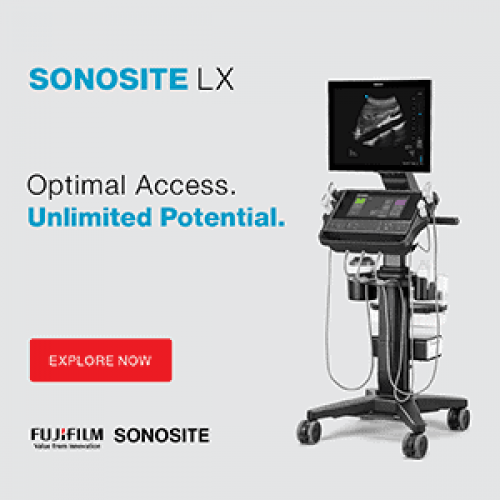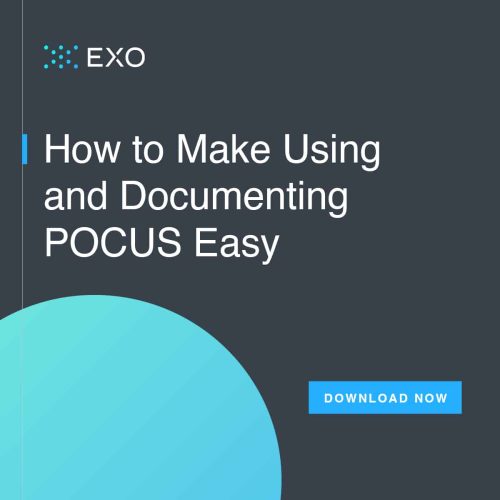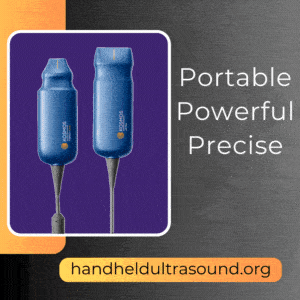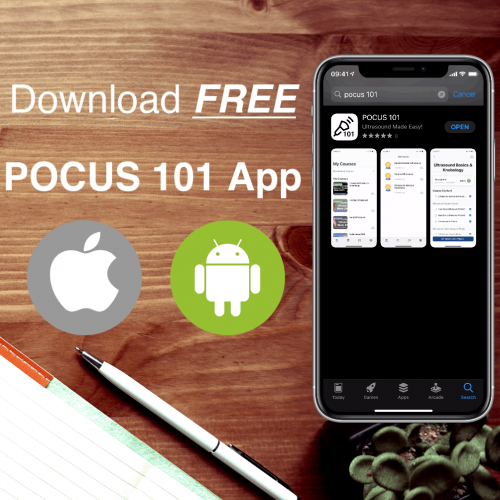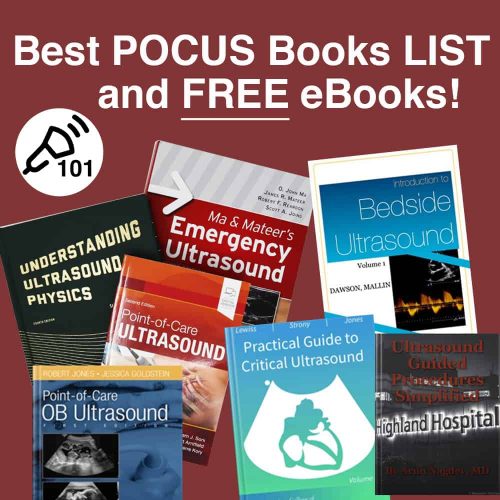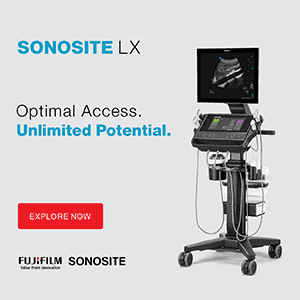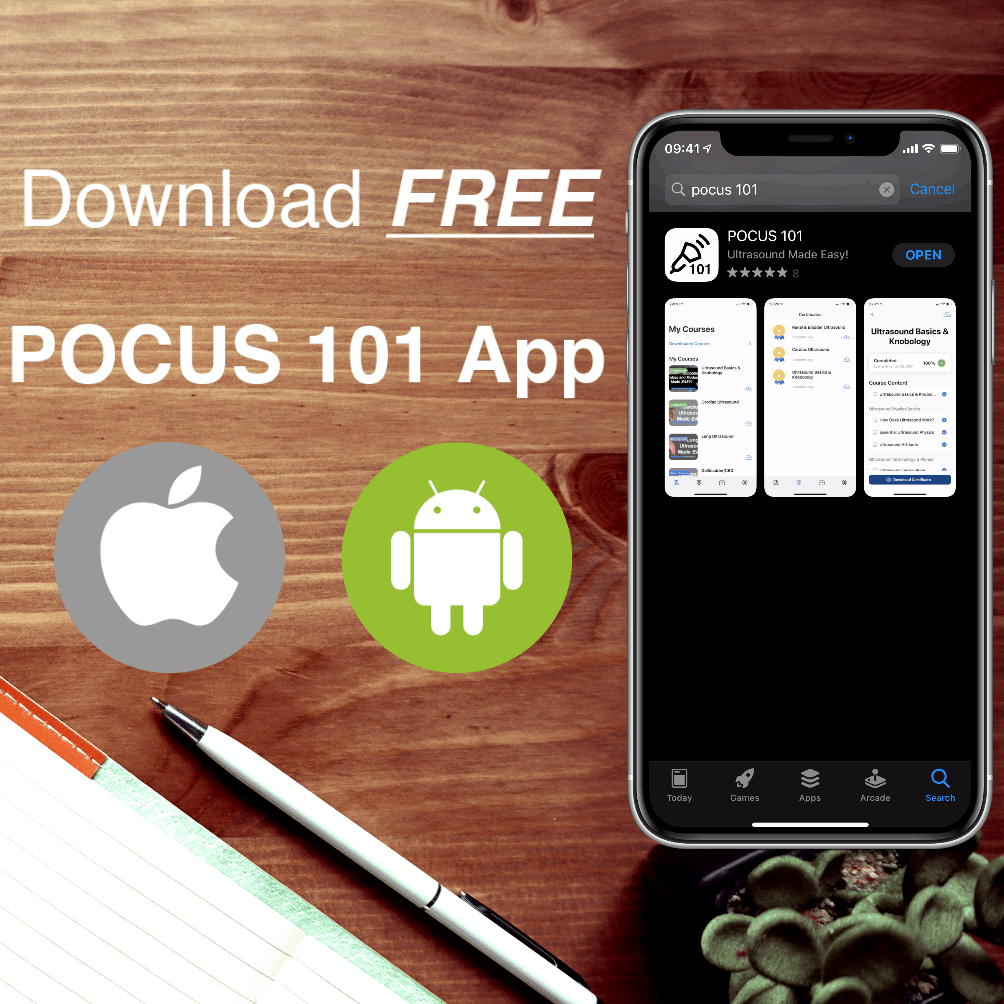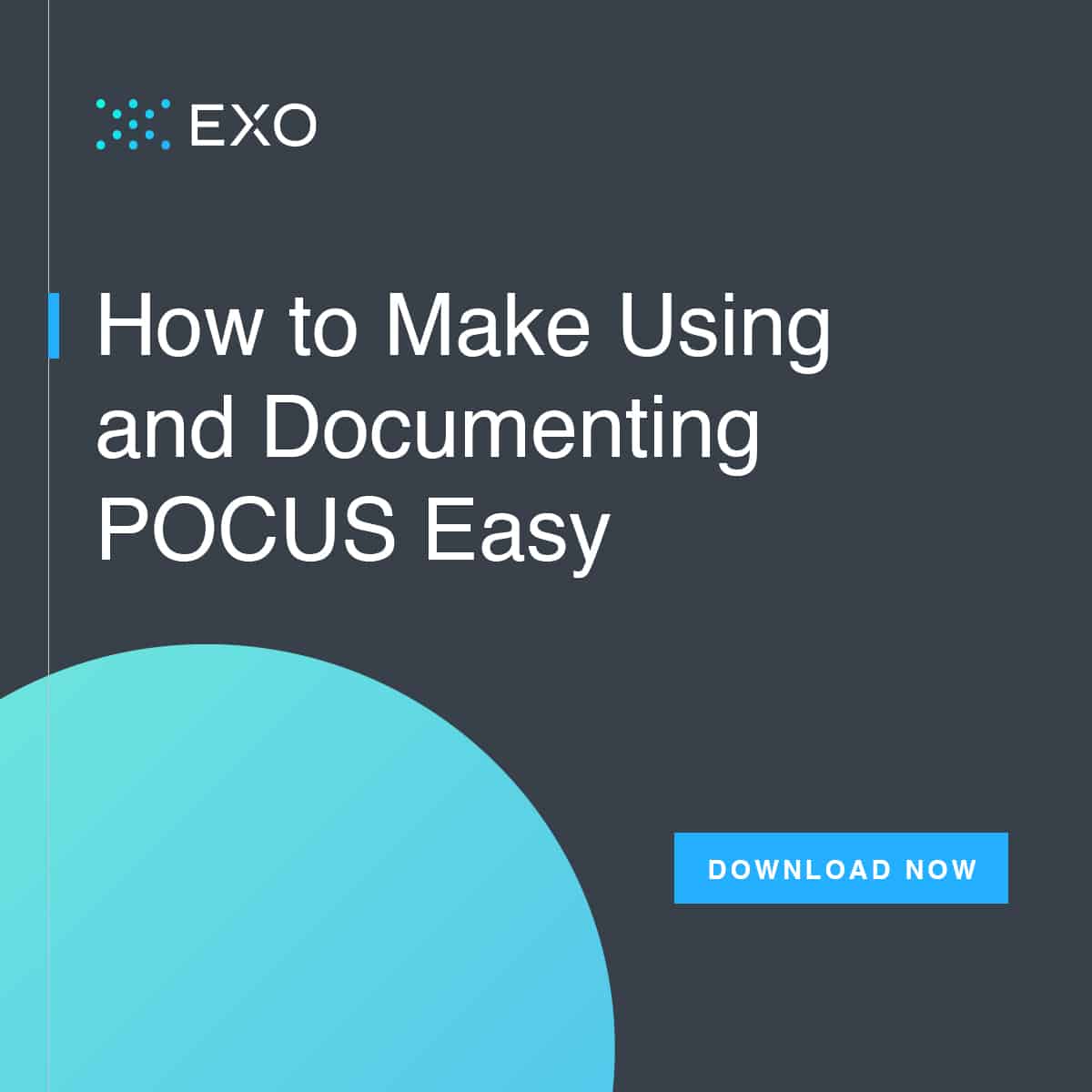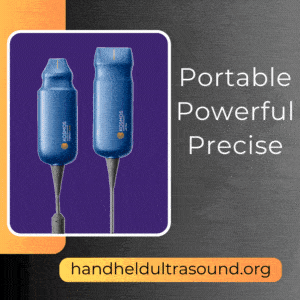[Editor’s Note: This is a post from Exo, one of our POCUS 101 Sponsors, on how to build a POCUS workflow]
Point-of-care ultrasound (POCUS) has the potential to completely reshape the healthcare space, especially as improvements in device image quality continue to leapfrog. Yet, even the most advanced POCUS devices on the market still struggle to gain widespread adoption because of convoluted workflow processes at many hospitals. These systems were never built with the needs of modern hospitals in mind, which represents a huge problem for any new healthcare technology adoption. As long as a POCUS workflow fails to meet the needs of modern medicine, where patients expect a seamless technology experience and attention at the bedside with portable technologies, the usefulness of POCUS for both the short and long term is at risk.
This article will explore the uses of POCUS in emergency medicine and how an improved POCUS workflow solution can alleviate some of the frustrations physicians encounter when using these devices, keeping them at a computer screen rather than serving their patients.
Table of Contents
What Can POCUS Be Used For?
Point-of-care ultrasound (POCUS) uses tend to fall into two buckets: diagnostic and procedural.
The job of ultrasound in the diagnostic use case is simplistic in that it defines what the symptoms are. If a patient can’t tell you what’s wrong, an ultrasound can assess what’s going on directly. It allows for diagnosis quickly, helping a trauma team know what is going on. Knowing whether someone who has collapsed has congestive heart failure or a bad asthma attack is critical. Doing an ultrasound bears that data out. Defining the disease process upfront can reduce anchoring bias. For example, if a physician believes a patient has asthma and treats them for asthma, but then the patient doesn’t get better, it’s an anchoring bias that led the physician to believe in that diagnosis. The beauty of ultrasound is that it’s not landing on a diagnosis right away. Instead, clinicians are looking for themselves and defining the situation with greater certainty. In an emergency environment, that’s beneficial.
Rather than sending off a patient with abdominal pain to find out if they have gallstones the next day, the doctor could look right away with POCUS to see if they have gallstones. It reduces diagnostic delay in an emergency department’s acute setting where time is precious. In an outpatient setting, patients may take three buses to see a doctor, and they would not have the time to come back the next day to find answers that could be given right away.
The secondary element of point-of-care ultrasound is procedural. If somebody is putting in a central line placement, doing an injection, or retrieving an abscess for biopsy, patients want accuracy on the first try. They expect that, with the advancements in today’s technology, clinicians will use the best technology available to do their jobs. The data support that using ultrasound for guidance reduces error and increases success. Point-of-care is a part of medicine, so it’s a skill that must be learned.
How POCUS Workflow Should Facilitate, Not Hinder
A POCUS workflow, especially in emergency medicine, should emphasize simplicity and speed. However, few if any existing workflows at hospitals have been designed with these aspects at the forefront. Compliance and security do not mean sacrificing delight for users.
There are a handful of functions that a POCUS workflow must do, regardless of the device in use and the hospital where documentation takes place: exams must receive QA. Images must be assigned to the correct patient. Exams must be uploaded to PACS and EMR systems and receive the correct CPT codes for reimbursement. Other functionality within the POCUS workflow must serve to facilitate these core actions.
A Solution That Works for All
The need for device-agnostic POCUS workflow solutions can’t be underscored enough as the proliferation of POCUS devices will no doubt continue as physicians crave portability to emphasize care that meets their patient needs where they are, rather than in sedentary environments.
When searching for the right POCUS workflow for your healthcare institution, consider how it will solve for or accommodate the needs of all stakeholders: physicians, clinicians, administrators, and most of all, patients. What are their concerns and how can your POCUS workflow address each of these concerns?
Administrators will want all exams documented correctly, extensively, and archived safely. The billing department at an institution will want all CPT codes added to the exams in a timely manner for reimbursement. IT departments will want proof of cybersecurity posture and verification for regulatory audits. Physicians will want efficiency, so they can focus on getting answers from ultrasound exams to inform their next steps of treatment. Patients want to know their care is taking priority.
These priorities don’t need to be in competition with each other. In fact, they can complement each other to drive home more effective, more attentive patient care if the workflow is set up to accommodate the real-time needs of its users. As a result, an end-to-end POCUS workflow is an answer that too many clinicians have long sought. Do you think that POCUS workflow solutions out there are addressing everything? Sadly, too many healthcare technology companies haven’t been designing solutions to meet these challenges.
Steps to Enact a POCUS Workflow Change
The answer to start selecting the right improvement to your POCUS workflow issue is to create a checklist prior to evaluating solutions, making sure all stakeholder needs are documented on the list. Then, once that step is done, verify which workflow solutions out there address every need on the list, or at least most of them. While this approach may not work for a hospital’s unique challenges in every scenario, it will help steer purchasers into the correct ballpark of an effective POCUS workflow.
Remember that the first and last question of every healthcare purchasing decision should be: “Will this help our patients?”
After these steps have been completed, consider what you’ll need to compare and verify the effectiveness of each workflow solution you evaluate. Take notes and share them with your decision-makers to account for any differing opinions. Once you’ve narrowed down candidates, have the sellers visit your hospital or healthcare facility to showcase how their solution will specifically accommodate your most crucial needs.
Here is a summary of steps to evaluating POCUS workflow replacements:
- Create a checklist of what you need in a POCUS workflow
- Prioritize what items are most important vs. which is “nice to have”
- Evaluate workflow products that meet the top half of your prioritized list
- Invite vendors to your site to evaluate which meet the bottom half of your list
- Compare notes with decision-makers and stakeholders
- Make your purchase decision
The Future of POCUS Depends Upon Effective Workflow
The full adoption of POCUS depends upon improving the existing, and many times outdated, workflow processes at many hospitals and facilities across the country. Indeed, POCUS is at an inflection point and improvements in device imaging quality and ease of use will, sadly, only go so far if the underlying infrastructure of POCUS itself is not conducive to its use.
For point-of-care to have an empowered future, the systems that point-of-care relies upon must also leapfrog in innovation.
Watch this webinar event from Exo on the topic of improving your POCUS workflow: “Rethinking POCUS Workflow: Solving the Chain of Pain.”
The Newest POCUS Workflow on the Scene
Readers who are experiencing a frustrating POCUS workflow situation are invited to check out Exo Works™, a brand-new POCUS workflow solution that aims to address all the challenges described in this post. Exo Works is designed to simplify the convoluted steps that physicians too often endure during POCUS scanning and post-exam documentation.
Exo Works is a mobile-friendly application that emphasizes one-handed POCUS use, so that even the most hectic environments can harness the benefits of POCUS for patient care. Whether using a phone, tablet or desktop computer, physicians can now use Exo Works to scan with any DICOM-enabled ultrasound device and document, bill and manage QA within seconds. Its secure, cloud-based platform can be accessed from a phone, tablet, or web browser, enabling physicians to do their work from anywhere. For seamless connectivity, Exo Works integrates with virtually any point-of-care ultrasound device and the most common EMR and hospital PACS systems.
To learn more about Exo Works, visit the webpage here.

